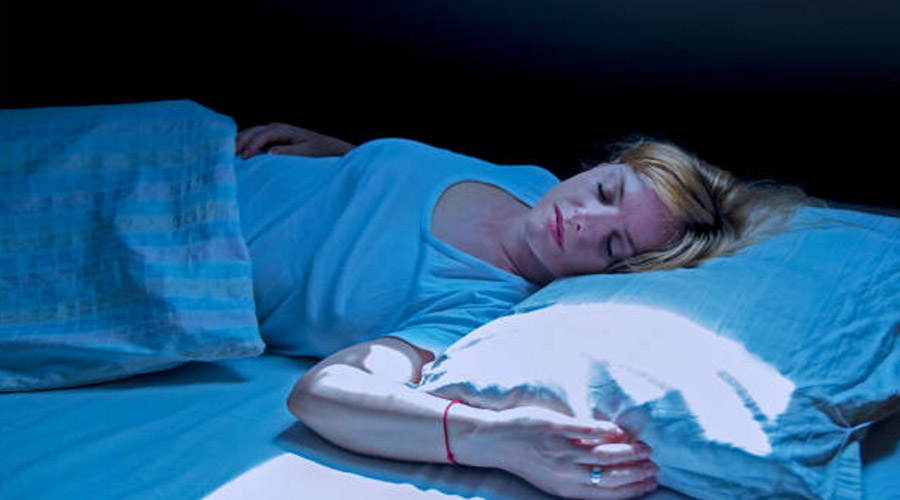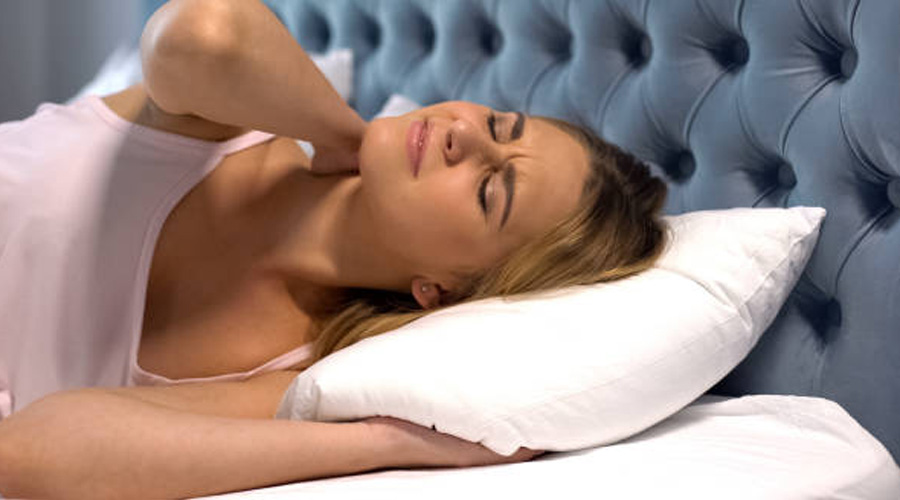There are many reasons why it is important to sleep in a comfortable sleeping position. Not only will this help you get a good night’s sleep, but it can also reduce the risk of developing chronic health conditions. People need to sleep in different positions for different reasons. Some people need more support while others need more movement. This article will give you ideas on some of the best sleep positions recommended by experts
What is the best sleeping position?

If you’re looking for a good night’s sleep, there is no single best way to do it. However, there are some general guidelines that can help you get more restful sleep. Below are the different sleeping positions and explanations as to how they affect your sleep and overall health.
Best sleeping position on your side

Sleeping on your side is one of the most natural and comfortable positions for humans. Studies have shown that this position reduces the risk of developing sleep apnea, heart disease, and other health problems. Additionally, it has been shown to increase blood flow to the brain and help you get a better night’s sleep.
Sleeping on your side also allows you to use your upper arm and hand for support, which can reduce the risk of developing neck or back pain. Additionally, this position also helps promote better breathing and reduces snoring. If you’re struggling with recurrent back pain, switching to sleeping on your side may be the answer to improved sleep quality.
Best sleeping position on your stomach

Sleeping on your stomach may not be the most popular option, but it could be the best sleep position for you. Sleeping on your stomach can help reduce pain in the neck and shoulders, as well as improve circulation. It also helps you fall asleep faster and stay asleep longer.
A study published in the journal “PLOS ONE” found that people who sleep on their stomachs report the greatest amount of quality sleep. Researchers believe this position helps align your spine and reduces stress on your neck and shoulders. If you’re struggling to get a good night’s sleep, try sleeping on your stomach.
Best sleeping position on your back

Sleeping on your back is one of the healthiest sleeping positions because it reduces the risk of neck and spine problems. Sleeping on your back also increases blood flow to the head and reduces inflammation in the spine. According to The Huffington Post, back sleepers have a lower risk of developing heart disease, cancer, obesity, and diabetes. Sleeping on your back also allows your spine to rest in its natural alignment which can improve your posture and relieve tension in your neck and shoulders.le
Sleeping on your back also allows you to keep your head and neck in a neutral position which is important for avoiding pain in the neck and shoulders. Sleeping on your back is one of the best sleeping positions for overall health and well-being.
Sleeping position for pregnancy

There are many different ways to sleep during pregnancy, but the most important thing is to find a position that is comfortable for both you and your partner. You may want to experiment with different positions until you find one that works best for you. In general, it is best to avoid sleeping on your back because it can lead to back pain.
Many people believe that the best sleeping position during pregnancy is on your left side, but this is not always true. In fact, many pregnant women find that sleeping on their right side is the best way to avoid back pain. The preferred sleeping posture for pregnant women will depend on the severity of their back pain and their own body comfort preferences.
Sleeping position for back pain

Back pain is one of the most common health complaints in the United States. It can be caused by a number of factors, including poor sleeping habits. There are a number of different strategies for finding the best sleeping position to avoid back pain, but the key is to find one that is comfortable for you and that will allow you to sleep peacefully without experiencing back pain.
Sleeping on your back can cause pain in the lower back, which is why you should try different sleeping positions to avoid it. A study published in The Journal of Bone and Joint Surgery found that sleeping on your side can help reduce pain, while a study published in The Spine Journal found that sleeping on your stomach can also help. Another recommended sleeping position to avoid back pain includes using a pillow between your legs.
Sleeping position for neck pain

If you’re experiencing neck pain, it’s important to find the best sleeping position to avoid it. According to the American Academy of Sleep Medicine, the best sleeping position to avoid neck pain is on your side with your head and shoulder slightly elevated. Additionally, they recommend avoiding sleeping on your stomach or on your back because these positions put pressure on the spine. You should also try the following sleeping positions: on your side, on your stomach, in a fetal position, on your back, and with your head and shoulders elevated.
Sleeping position for stuffy nose

Some people find that sleeping on their back helps to clear their nasal passages; others swear by sleeping on their side. However, there is no definitive answer when it comes to the best sleeping position for people with a stuffy nose. Some people say that lying on your side allows your head and chest to move in tandem, which can help clear your nose. It also props up your neck which can help reduce the severity of a stuffy nose. If you can’t sleep on your side because of neck pain, try sleeping with a pillow between your knees or elevating your head with a pillow. Others recommend that you sleep on your back in order to keep your airway open.
Which side is best for GERD?

Sleeping on your back may be the best way to avoid GERD when you have the disorder. This is according to a study published in “Journal of the American College of Gastroenterology.” Researchers found that those who slept on their backs had a 50 percent lower risk of developing GERD than those who slept on their sides.
Some people believe that side sleeping can aggravate the condition, while others feel that on your back allows you to breathe more easily and avoids overcrowding of the stomach. Ultimately, the best way to manage GERD while sleeping is to experiment and find what works best for you.
What’s the best position for preventing wrinkles?

Wrinkles can happen due to a number of factors, but the best position for preventing them is still up for debate. There are many different positions that can be taken to prevent wrinkles, but the best position depends on the person. Some people believe that sitting up straight and keeping your head and neck supported can help reduce wrinkles in the skin below your eyes. Others think that sleeping on your stomach with your chin down can help keep your skin tight. Whatever position is chosen, it is important to stay consistent with it for the long term in order to see results.
Derivation
In conclusion, the experts believe that the best position to sleep in is on your back. This position allows your head, neck, and spine to rest in a neutral position. It also decreases the chances of snoring and sleep apnea. If you are unable to sleep on your back, try sleeping on your side with a pillow between your legs. If you sleep with a partner, you should have enough space to move into a comfortable sleeping position. Consider replacing your mattress every 6 to 8 years, according to the National Sleep Foundation. If you have a back problem, ask your healthcare provider or physical therapist to advise the type of mattress that would be best for you.
FAQ
What is the healthiest sleeping position?
There are many different ways to sleep, and each person has their own preferences. However, there is one type of sleep that is considered healthy for most people: sleeping on your back. This is the recommended position for overall health, and it’s also the most comfortable position for sleeping. Sleeping on your back keeps your spine in a neutral alignment, which reduces the risk of developing chronic pain and other conditions.
What is the correct way to sleep?
Sleep is essential for health, but there is no one right way to sleep. Some people prefer to sleep on their backs, while others prefer to sleep on their stomachs. Some people like to sleep in a dark environment, while others like to sleep with lights on. There is no right or wrong way to sleep, as long as you are comfortable and get the best quality of sleep possible.
Why you shouldn't sleep on your right side?
If you’re a right-handed person, sleeping on your right side might not be the best idea. There are a few reasons why this might be the case: 1) Your dominant hand is more likely to be injured if you sleep on your right side. 2) Your heart rate and breathing are both slightly slower when you sleep on your right side. 3) You’re more likely to develop snoring or sleep apnea if you sleep on your right side.
What sleeping position is best for posture?
Sleeping on your back with your head elevated can help to improve your posture, but it’s not the only way to do it. According to a sleep posture study from the University of Utah, sleeping on your side with your knees bent also helps to improve your posture. The study found that people who slept on their sides had less spinal curvature than those who slept on their backs or stomachs.
What does science say about sleeping direction?
Science has long been divided on the topic of sleeping direction. Some believe that it doesn’t matter which way you sleep, while others believe that one position is better than another. A study released in 2016 attempted to settle the debate by looking at the scientific evidence. The study found that there is no difference in how well people sleep when they sleep in different positions, but there is a difference in how well they function when they sleep on their left or right side.

